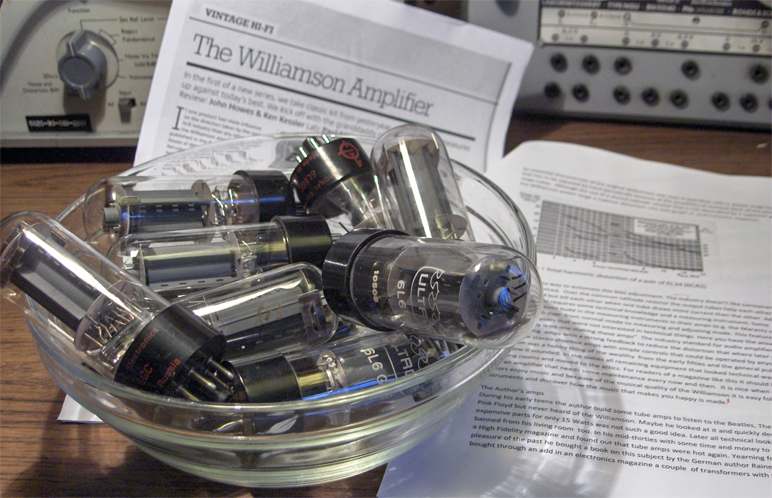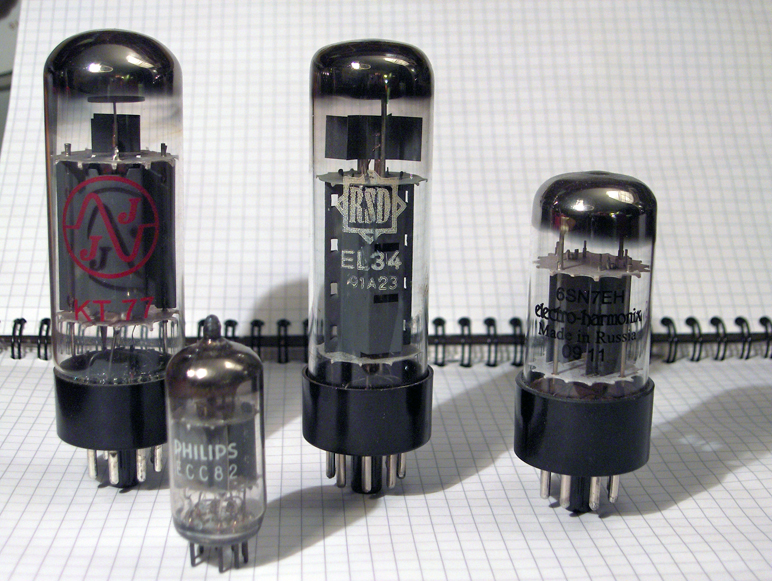The Tubes |
|||||
 |
|||||
| When it comes to tubes for the Williamson there are several options to choose from. If you read the reviews on the websites of tube suppliers you will get the impression that tubes "sound" like musical instruments "sound". Like a Steinway grand piano sounds better then a Bosendorfer. You may read in those reviews that this tube gives an excellent bass reproduction and that the other one is clearer. Those reviews mean to say that the buyer is satisfied with his or her purchase, nothing more, nothing less.
Often the reviews on websites are about tubes that are employed in guitar amplifiers, often class B and are judged by their extreme distortion. In a Hi-Fi amplifier a tube should not "sound" but amplify in a circuit. While doing so, it is a law of nature that distortion arises. The circuit of a Hi-Fi amplifier should be designed in a way that the distortion of tube A will be undone by tube B. (Although there are people who love the harmonic distortion of single ended triode amps). In the Williamson amplifier only triodes are used in a way that they undo each others distortion (except for the first stage but there the amplification factor is kept very low). All tubes have a amplification factor of 10 to 15. It would be tempting to start a project to find out which combination of tubes sound best. After almost 20 years of experimenting with the author didn't develop a preference for either the beam power tubes KT77 or the EL34 (6CA7). The EL34 he bought 20 years ago, branded RSD are still doing fine, so are the KT77 branded JJ but if they last 20 years..? In the input stage the author used ECC82 (12AU7) or 6SN7. Maybe the ECC82 sound a little less sweet but maybe the author prefers that. Using the 12BH7 in the driver stage of the amplifier designed by Pascal Jansen (see chapter 7) seemed a good choice but, as said, not all combinations are tried out. In the last succesful commercial tube amplifier, the Luxman SQ38, the manufacturer had chosen the ECC82/EL34 combination. The American equivalent of the KT66, the 807, which is also popular by radio amateurs, is still as "new old stock" available at resellers of radio amateur supplies at reasonable prices! Beware of its top plate connection! |
|||||
 |
|||||
| Picture above, a dish full of obsolete 6L6 GC tubes branded as National, Ultron or Sovtec but all from the same manufacturer. They were cheap but lasted only a few months in class A operation. Waiting for a second live in a class B guitar amp. | |||||
 |
|||||
| The tubes that are is use by the author, note that the EL34 often has a very slim glass tube but the same max dissipation as the KT77 which is fatter. | |||||
|
The |
|||||
|
|||||